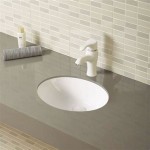Essential Aspects of Changing Tiles in the Bathroom
Upgrading your bathroom tiles can transform the entire space, creating a brand-new look and feel. While it may seem like a daunting task, changing tiles is a manageable project with careful planning and execution. This comprehensive guide covers all the essential aspects you need to consider to ensure a successful tile installation.
Planning and Preparation
Begin by measuring the bathroom space accurately and calculating the number of tiles required. Choose tiles that complement the overall design scheme and durability requirements of the bathroom. Plan the layout by arranging the tiles dry on the floor or walls to visualize the final look.
Removing Existing Tiles
Before installing new tiles, it's crucial to remove the existing ones. Protect the surrounding areas with tarps and use a chisel or hammer to carefully pry off the tiles. Remove all adhesive residue and clean the surface thoroughly to prepare for the new installation.
Installing the Backer Board
A backer board provides a stable and moisture-resistant base for the tiles. Using screws or adhesive, attach the backer board over the cleaned surface, ensuring it is level and secure. This step is particularly important in wet areas like showers to prevent water damage.
Applying Thin-Set Mortar
Thin-set mortar is a specialized adhesive used to bond tiles to the backer board. Using a notched trowel, spread a thin layer of mortar onto the surface where the tiles will be installed. Avoid applying excess mortar, as it can create unevenness.
Laying the Tiles
Carefully position the first tile in the corner or center of the wall or floor. Press down firmly to ensure it adheres properly. Continue laying the tiles in rows, regularly checking the level to maintain a straight and even surface. Use tile spacers to maintain consistent gaps between the tiles.
Grouting the Tiles
Once the tiles are set, apply grout to fill the gaps between them. Choose a grout color that complements the tiles and use a grout float or trowel to work the grout into the joints. After letting it set for a short time, wipe off excess grout using a damp sponge.
Sealing the Tiles
To protect the tiles and grout from moisture, apply a sealant. Using a paintbrush or roller, apply the sealant to the surface of the tiles and grout, following the manufacturer's instructions. Allow adequate time for the sealant to dry and cure before using the bathroom.
Additional Tips
- Rent professional tools such as a tile saw, tile cutter, and level for precise cutting and installation.
- Protect your eyes and hands with safety glasses and gloves during the installation process.
- Allow ample time for each step to ensure proper adhesion and curing.
- Keep the bathroom well-ventilated while working to prevent moisture buildup.
- If you encounter any difficulties, do not hesitate to consult a professional tiler for assistance.

Can You Change Tile Color Without Replacing It Maryland Tub

How To Renovate Bathroom Without Removing Tiles Multipanel

How To Upgrade Bathroom Tile Without Replacing

The Best Way To Remove Old Shower Tile

Is Ceramic Tile Refinishing Worth It

Preparing Walls For Tiling Removing Old Tiles Bathroom Guru

Easy Diy Guide On Removing Tiles From Walls Fantastic Handyman Au

How To Remove A Tile Floor

8 Ways To Update Your Vintage Tile Bathroom Building Bluebird
Help Tile At Bottom Of Shower Changing Color Ceramic Advice Forums John Bridge






